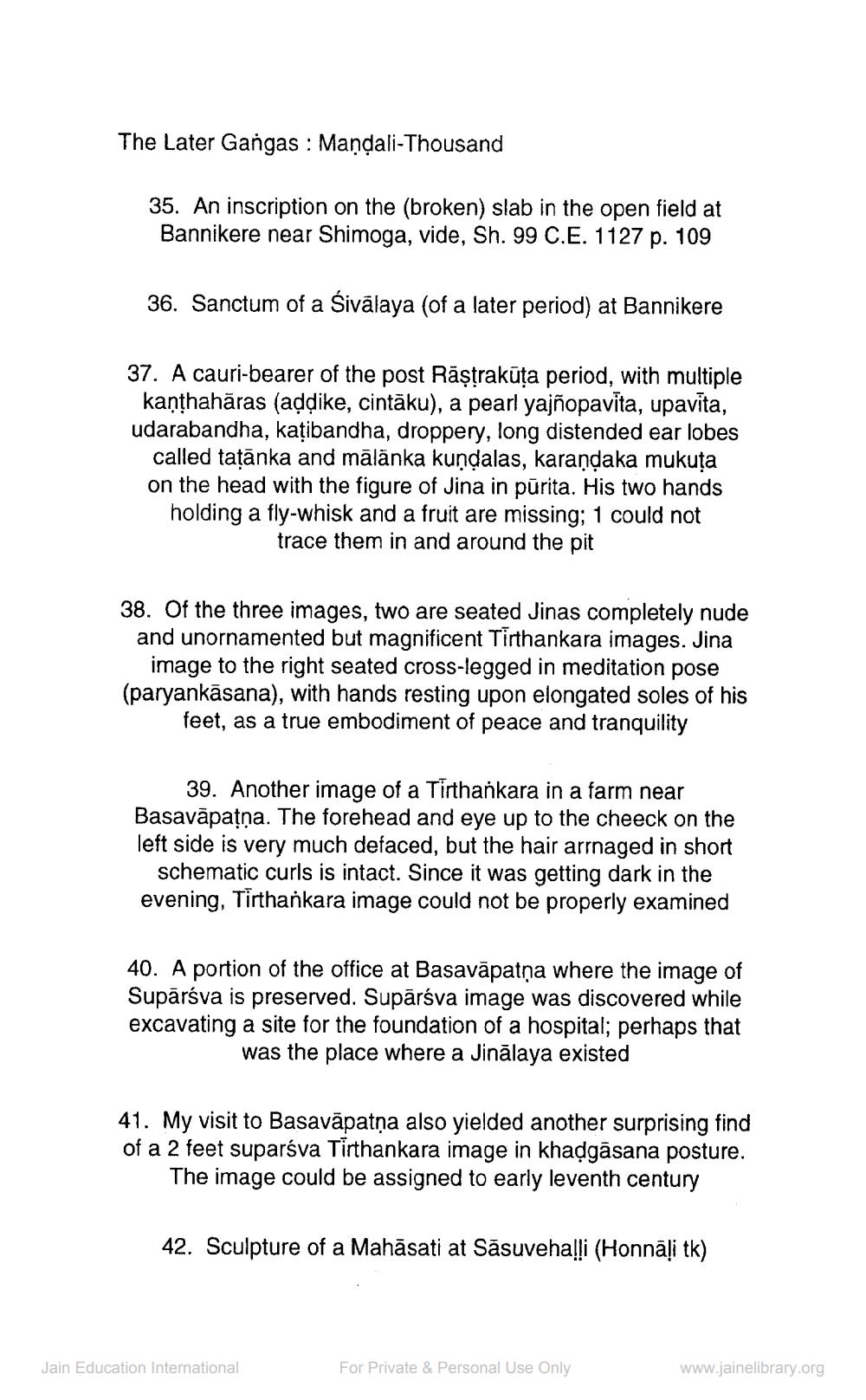________________
The Later Gangas : Mandali-Thousand
35. An inscription on the (broken) slab in the open field at Bannikere near Shimoga, vide, Sh. 99 C.E. 1127 p. 109
36. Sanctum of a śivālaya (of a later period) at Bannikere
37. A cauri-bearer of the post Rāştrakūta period, with multiple
kanthahāras (addike, cintāku), a pearl yajñopavita, upavita, udarabandha, katibandha, droppery, long distended ear lobes
called taţānka and mālänka kundalas, karandaka mukuta on the head with the figure of Jina in pūrita. His two hands holding a fly-whisk and a fruit are missing; 1 could not
trace them in and around the pit
38. Of the three images, two are seated Jinas completely nude and unornamented but magnificent Tirthankara images. Jina
image to the right seated cross-legged in meditation pose (paryankāsana), with hands resting upon elongated soles of his
feet, as a true embodiment of peace and tranquility
39. Another image of a Tirthankara in a farm near Basavāpatņa. The forehead and eye up to the cheeck on the left side is very much defaced, but the hair arrnaged in short
schematic curls is intact. Since it was getting dark in the evening, Tirthankara image could not be properly examined
40. A portion of the office at Basavāpatņa where the image of Supārsva is preserved. Supārsva image was discovered while excavating a site for the foundation of a hospital; perhaps that
was the place where a Jinālaya existed
41. My visit to Basavāpatņa also yielded another surprising find of a 2 feet suparáva Tirthankara image in khadgäsana posture.
The image could be assigned to early leventh century
42. Sculpture of a Mahāsati at Sãsuvehalli (Honnāļi tk)
Jain Education International
For Private & Personal Use Only
www.jainelibrary.org




